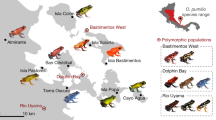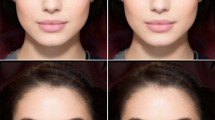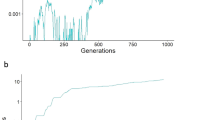Abstract
WHEN Konrad Lorenz showed that early experiences can have a dramatic influence on the mating preferences of birds, he proposed that ‘sexual imprinting’, as the process came to be known in English, enables adults to recognise their own species1. Subsequent experimental work2,3 has, however, suggested that, although early experiences can indeed have long-lasting effects, a bird may also show a preference for members of its own species in the absence of experience with any of them except itself. The implication is that a bird may have a predisposing bias for its own species and sexual imprinting merely refines this bias in natural conditions. If birds are able to identify and mate with their own species without prior experience (and seeing or hearing themselves is irrelevant) what is the biological function of sexual imprinting? One possible answer is that sexual imprinting is required for recognition of close kin so that, by selecting mates that are slightly different, the animal is able to strike an optimal balance between inbreeding and outbreeding4. The prediction is that the strongest mating preference of a bird should be for something a little different (but not too different) from the object with which it had been imprinted. I report here that male Japanese quail (Coturnix coturnix japonica) mate with slightly unfamiliar females in preference to females to which they were exposed in early life, and that both types of female are preferred to those with a grossly unfamiliar type of plumage.
This is a preview of subscription content, access via your institution
Access options
Subscribe to this journal
Receive 51 print issues and online access
$199.00 per year
only $3.90 per issue
Buy this article
- Purchase on Springer Link
- Instant access to full article PDF
Prices may be subject to local taxes which are calculated during checkout
Similar content being viewed by others
References
Lorenz, K. J. Orn. Lpz. 83, 137–213; 289–413 (1935).
Immelmann, K. Z. Tierpsychol. 26, 677–691 (1969).
Schutz, F. Z. Tierpsychol. 22, 50–103 (1965).
Bateson, P. P. G. in Biological Determinants of Sexual Behaviour (ed. Hutchison, J. B.) 29–53 (Wiley, London, 1978).
Gallagher, J. Behaviour 57, 91–114 (1976).
Gallagher, J. J. comp. physiol. Psychol. 91, 72–78 (1977).
Sonnemann, P. & Sjölander, S. Z. Tierpsychol. 45, 337–348 (1977).
Mather, K. Genetical Structure of Populations 1–197 (Chapman and Hall, London, 1973).
Bateson, P. P. G. Anim. Behav. (in the press).
Author information
Authors and Affiliations
Rights and permissions
About this article
Cite this article
BATESON, P. Sexual imprinting and optimal outbreeding. Nature 273, 659–660 (1978). https://doi.org/10.1038/273659a0
Received:
Accepted:
Issue Date:
DOI: https://doi.org/10.1038/273659a0
This article is cited by
-
Development and microbiology
Biology & Philosophy (2021)
-
In humans, only attractive females fulfil their sexually imprinted preferences for eye colour
Scientific Reports (2020)
-
Imprinting and flexibility in human face cognition
Scientific Reports (2016)
-
Male-male competition drives sexual selection and group spawning in the Omei treefrog, Rhacophorus omeimontis
Behavioral Ecology and Sociobiology (2016)
-
Koinophilia and human facial attractiveness
Resonance (2015)
Comments
By submitting a comment you agree to abide by our Terms and Community Guidelines. If you find something abusive or that does not comply with our terms or guidelines please flag it as inappropriate.



